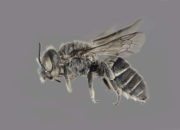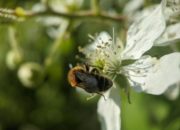The first North American record for this European species was from Albany County NY in 1969. It has since been found in several other states + Ontario. The first documented VT occurrence was in 2020 in Rutland County. It is a specialist on Viper's-Buglosses (Genus Echium) which is a non-native, widespread forb. It builds stone nests on the outside of rocks and concrete structures.
Identification: The male is perhaps one of the most stunning bees in VT, its covered with orangish-red hair and has brilliant blue eyes. The female is drab grey. While smaller than a honey bee, both are larger than other Small Masons.
Similar Species: The male is unmistakable, and while similar to other Small Masons (Hoplitis) the female may be hairier. Additional diagnostic features visible in photographs will be added if/when they are discovered.
Global Status: Not Ranked
Vermont Status: Introduced
For more information, visit the following links:
Discover Life
Living Atlas Species Page
Relevant literature
Hoplitis anthocopoides, a European Mason Bee Established in New York State. Eickwort 1970.
Gregarious Nesting of the Mason Bee Hoplitis anthocopoides and the Evolution of Parasitism and Sociality Among Megachilid Bees. Eickwort 1975.
Distribution: To see the global distribution, check out the iNaturalist account, and toggle the GBIF layer on the map.








